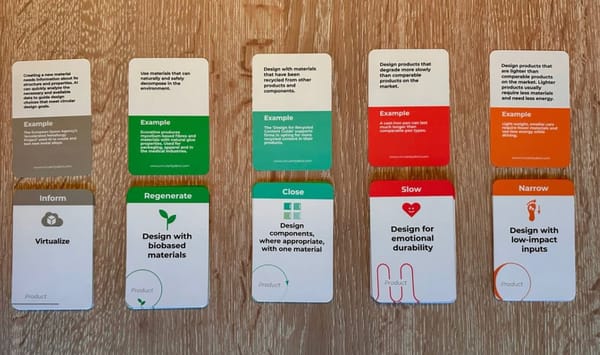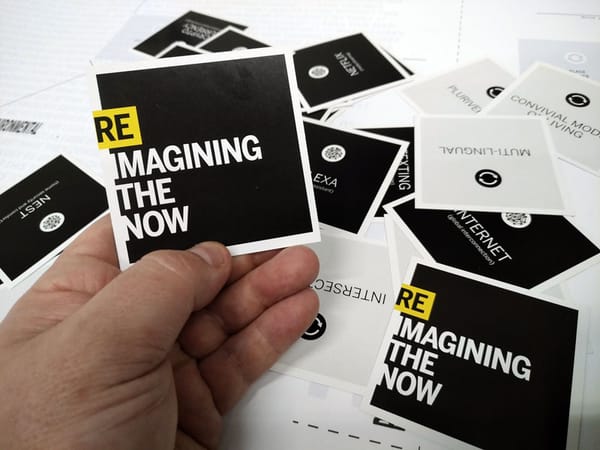№ 83 | Stop Project 2025 Comics, Future for All: A vision for 2048, eyeConnect Cards, The Rule Book, and the Effects of Geography on Voting
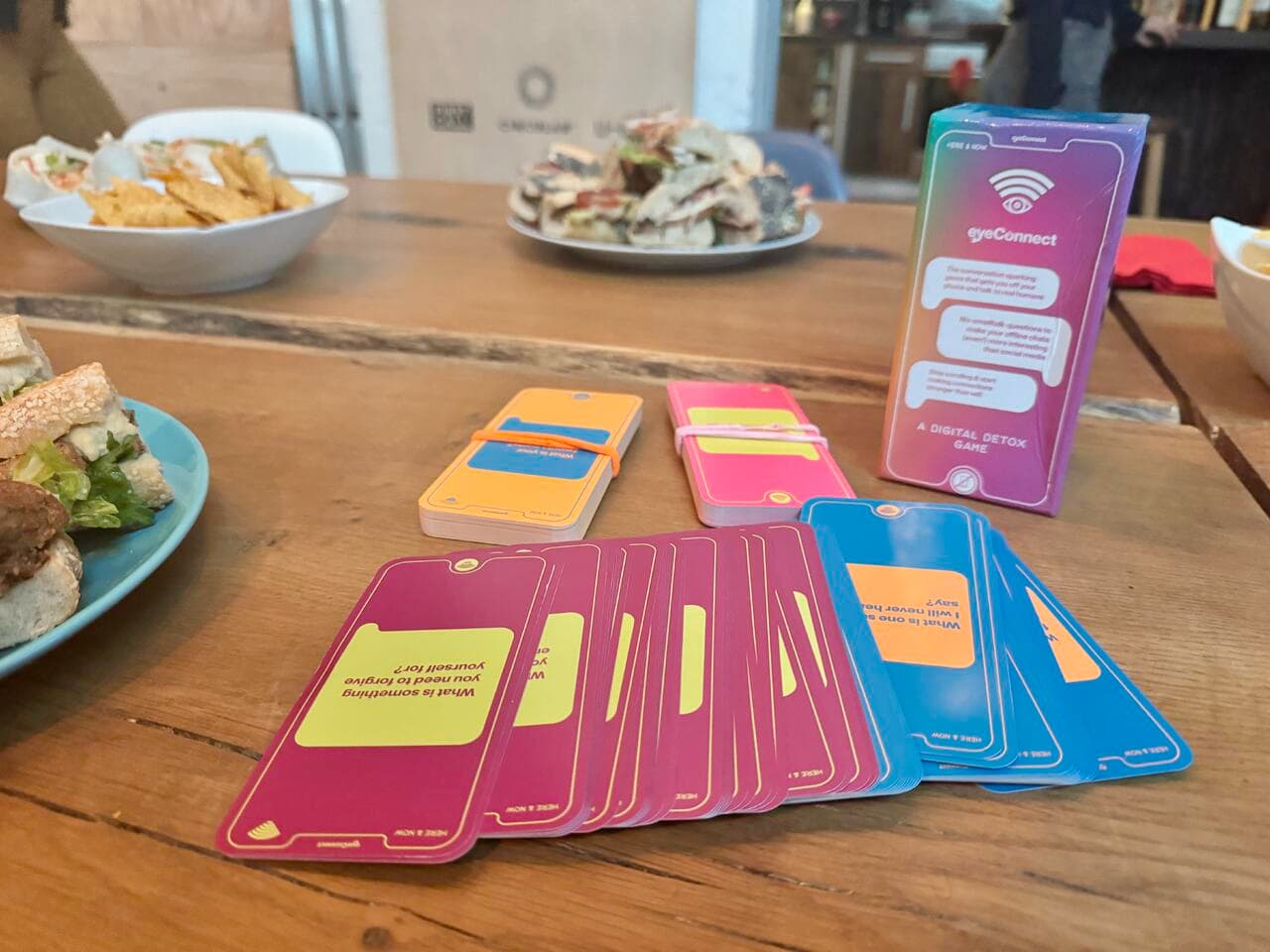
This edition of the newsletter comes a couple days later than usual, but for a wonderful reason—I spent 5 days last week playing board games with my friends at BGG Con. 🎲 🤩 Next issue will resume the normal Sunday schedule!
If you're participating in the Create A Real Life Character Sheet challenge:
* You have two weeks left to complete character sheets!
* We have an (optional) office hours/check-in this Friday.
And… It's not too late to join in if this sounds intriguing (details in the linked page).
Okay, onto the finds:
Stop Project 2025 Comics
[🇺🇸] In the past, I’ve shared comics as playful things to think with (see issues 81 and 44). I had hoped I wouldn’t need to share this next find, but… here we are. 🤷♂️ Stop Project 2025 Comic features dozens of short comics that shed light on some of the horrifying plans contained in the ultra-conservative Project 2025 Mandate. Since most of us don’t have time to read through the 900+ pages, this collective has “made comics to explain some of that agenda.” This 2 panel spread on internet freedom is a good place to start:
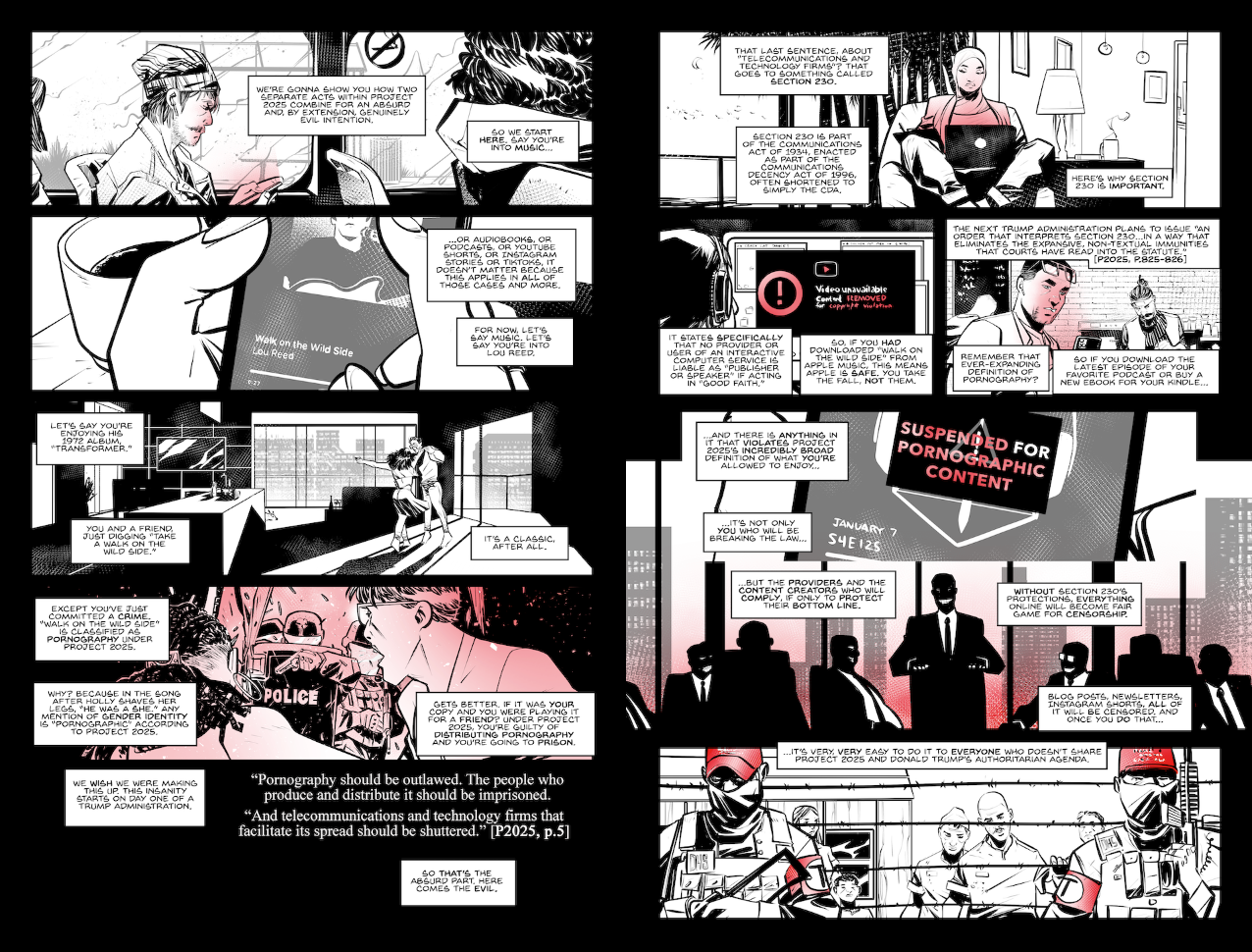
While it’s good to know what to fight against, it’s equally—if not more—important to focus on what we’re fighting for (a fighting metaphor Stephen, really?!). Which leads me to…
Future for All: A vision for 2048
Over the last year, I’ve sought out novels (and I guess reports like this one) that help us to imagine hopeful near-futures, and the work needed to make things better. I need to spend more looking into this, but Future for All: A vision for 2048 is a vision for 2048, and one that (at a glance) seems kind of wonderful.
Imagine waking up in the year 2048.
Where are you? What is this place like? What forms of transport do you use? What sort of foods do you eat? What do you do during the day? And how do you participate in society? If you could leave your current lifestyle behind for a moment and imagine your future, what would that future be like? How can it be just, ecological and achievable – for everyone?
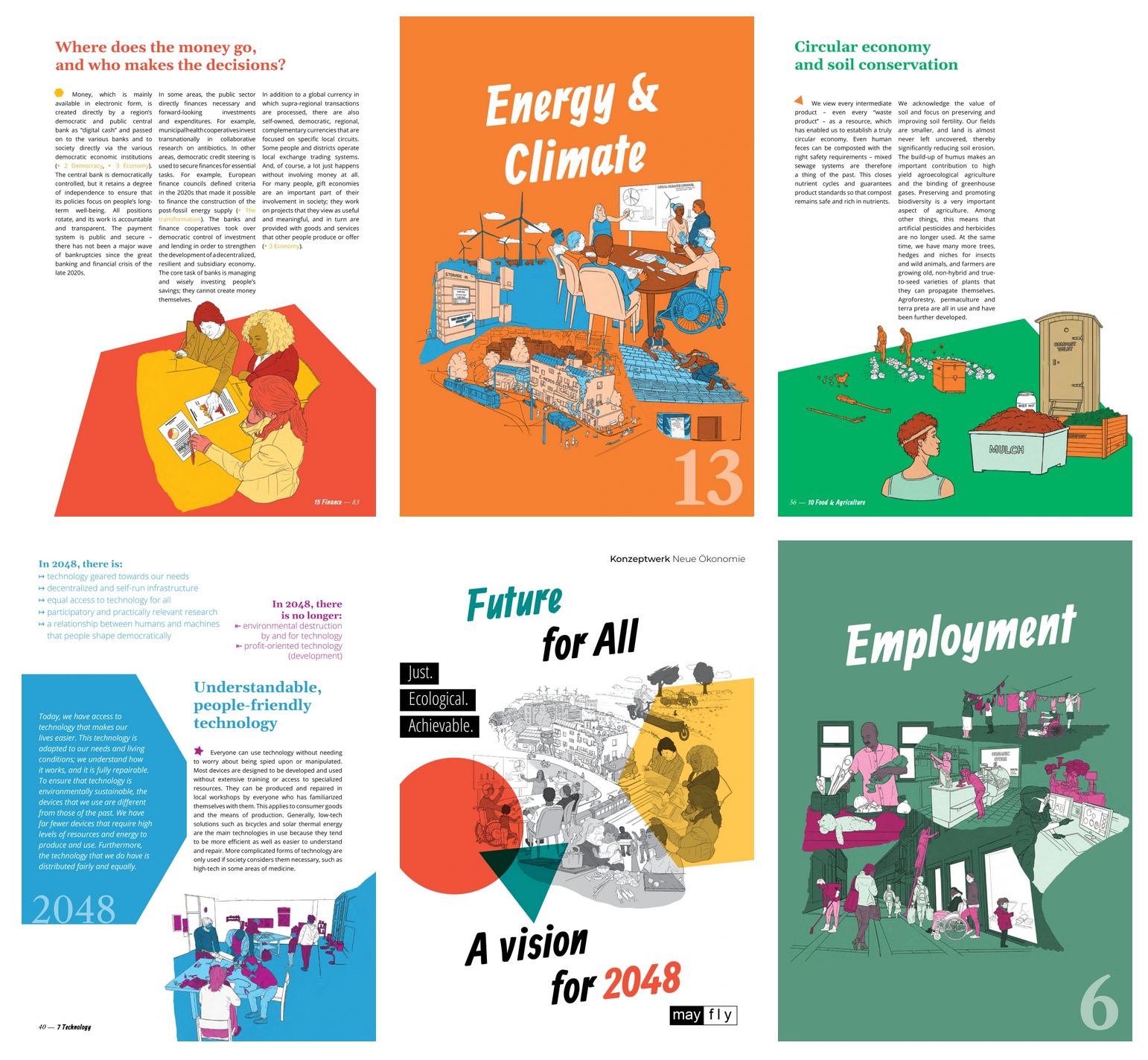
From the opening paragraphs:
We need ideas that imbue global citizens with encouragement and hope, ideas that make us look forward to the future and inspire us to shape it.
Preach!
eyeConnect cards
I’m reading more and more articles about how our attention is the most prized currency we need to become aware of and protect. I also recall some incredible wisdom I once picked up from a co-worker: Be where your feet are. Along these lines, eyeConnect is “the conversation sparking game to help you disconnect from your phone and reconnect with the people around you.”

[Found via Nini Fritz on LinkedIn, where she shares her answer to the eyeConnect question: “How is your online identity different from your offline identity?”]
5 kinds of rules (for games)
My spouse and I don’t always see eye to eye on the value of rules when playing games. For example, she and her sister grew up playing Monopoly with the goal of stealing from the bank, without getting caught—something that I find appalling! Her priority: Have fun! Mine: Fun—within the defined rules. Which can lead one to reflect on game rules, and… meta-game rules?
Anyway, I love how The Rule Book diagnoses five broad categories of rules:
Formal rules: the explicit statements that constitute gamesInternal rules: the often private rules and goals that players set for themselvesSocial rules: the indeterminate shared social and cultural norms and values that guide gameplayExternal regulation: the rules and laws enforced by the surrounding society that impact gameplayMaterial rules: the material embodiments of rules and the brute circumstances of play
According to the authors:
These artificial categorizations are lines drawn in the sand, but we have found them analytically fruitful. All play is culturally situated, and gameplay emerges in the intersection of rules, EULAs, designer intentions, player practices, social norms, and so forth.

The effects of geography on voting
In one of Malcom Gladwell’s books (Outliers), he argues that modern differences between Eastern educational practices and Western educational practices can be traced back to their respective agricultural legacies; something to do with how a year round crop like growing rice might lead to different cultural norms relative to regions with seasonal crops and distinct periods of planting, harvest, rest, and so on. I also recall (from a different source?) a theory that traces the modern day entrepreneurial ethos of Silicon Valley, back to those personalities that would have, while others settled down, continued their westward expansion during the mid-to-late 1800s. Obviously, these are super-broad, correlative generalizations. But, fascinating to ponder!
Along these lines, here’s an intriguing look at “How a coastline 100 million years ago influences modern election results in Alabama.” 🤪

Random Fun Stuff:
Both board game related:
- Before taking off as an author, Kurt So Vonnegut designed a board game that's never been published, until now. This game developer’s diary offers a fascinating look at the history of this game and the process needed to modernize this, while honoring the original.

- While at BGG Con, I discovered this very niche UX for Tabletop Games Flash Card Deck. Yes, I purchased a deck. Yes, it is so so very me.

But wait, there’s more!
📚 Crazy eBook (Ebook?) Deals!
“Ten Free Ebooks for Getting Free!”
I’ve been thinking a lot about (clinging to, actually!) Hope. Not the optimistic “it’ll all be fine” kind of hope; rather, the Rebecca Solnit kind of hope that begins in darkness. Here’s one of many gems from her classic book Hope in the Dark:
Hope just means another world might be possible, not promised, not guaranteed. Hope calls for action; action is impossible without hope.
If you’ve not yet read Hope in the Dark, Haymarket Books has made Solnit’s book, along with nine others, freely available (until the end of this week), as part of their Ten Free Ebooks for Getting Free promotion.
At Haymarket, we believe that books are crucial tools in struggles against racism, imperialism, and capitalism—and for a better world. That’s why we’ve decided to make TEN key ebooks free to download: join us in reading these indispensable works of analysis, history, and strategy.

AND… 🥁
While not quite free, this book bundle from Humble Bundle is a great way to pick up 25+ books from Ursula K. Le Guin for a great price: A Wizard of Earthsea and More by Ursula K. Le Guin.



